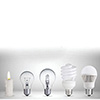
If you have wondered how we managed to progress from a simple lightbulb to energy-efficient LEDs, put your doubts to rest now. Delve into From Edison to LEDs: The Science and Story of Light Sources to embark on a fascinating journey to see how the earliest attempts at creating electric light, resulted in multi-billion-dollar industries that are dependent on the various light-producing devices of today. In the book, author and leading expert, Dr Faiz Rahman, explores the fascinating journey of light-emitting device developments from the nineteenth century to the present. This book offers readers a systematic exploration of the advancements that have shaped the transition from simple light bulbs to energy-efficient LEDs.
Dr Rahman’s expertise shines throughout the book, from his exploration of Edison’s incandescent light bulb to the latest advancements in light-emitting diodes. By introducing the underlying physics of light as an electromagnetic phenomenon, the book ensures a strong scientific basis for the journey ahead. Expect to see a coverage of both common and some very uncommon light sources. Written in an engaging style and jam-packed with insightful explanations, going through this volume will greatly add to the knowledge of any reader. While some technical sections may require a deeper understanding, the majority of the content is accessible to high school students and is highly recommended for aspiring young scientists.
Discover an enthralling journey of light sources in From Edison to LEDs. The book takes readers through an enthralling journey, covering almost every known major technique for producing light. Told in eight chapters, the book traces the captivating developments in optical science and electromagnetic radiation. It chronologically describes the stories and accompanying technologies of both common and uncommon light sources, primarily focusing on visible light. Devices that emit invisible radiation are also covered for comprehensiveness. Not only do we learn about the basic scientific principles and the engineering behind various devices, we are also introduced to the brilliant minds behind their creations. With richly illustrated accounts, the book unveils rare illustrations and captivating anecdotes.
For readers seeking to explore the realm of optical sciences, this book would cultivate a profound appreciation for electromagnetic radiation in their daily lives. It offers a comprehensive understanding of light generation and utilization. This would enable readers to grasp the transformative potential across various fields. All in all, this is a volume that is a well-needed read for all scientists and engineers, and an absolute must read for those who are directly involved with the business of light in any way.

